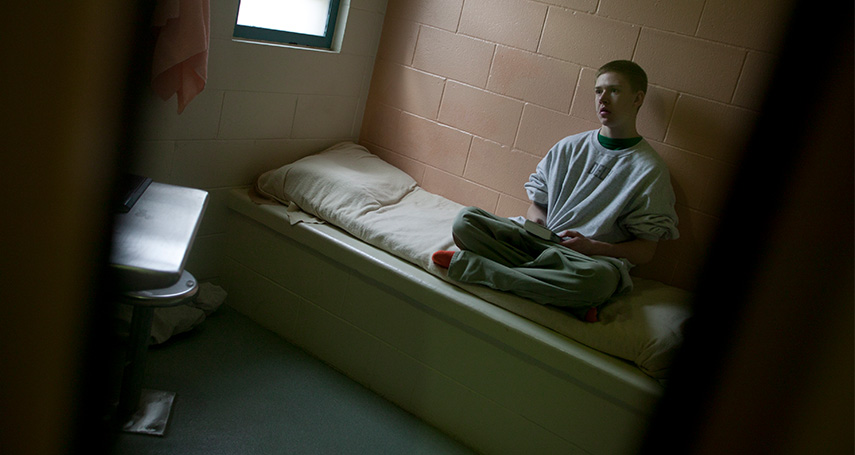The United States persists in incarcerating children and youth despite overwhelming evidence of its ineffectiveness in steering them away from further system involvement.81 Although the number of youths arrested and incarcerated has declined significantly between 2000 and 2020, the decline is not spread equitably across all demographics. Children of color are especially vulnerable to overcriminalization and therefore overrepresentation on every front:
- Of the 265,600 children arrested in the United States in 2021, 1 in 3 were Black children, though Black children constitute only 15% of the nation’s youth population.
- Fully two-thirds (67%) of children in the juvenile justice system are children of color (see Table 35).
- 41% of youth in custody (ex. juvenile justice and detention centers, jails and prisons) are Black. 82
- Black youth are more likely to be in custody than White youth in every state but Hawaii.
- The national youth placement rate of 114 per 100,000 masks a massive racial disparity. The Black youth placement rate of 315 per 100,000 eclipses the White youth placement rate of 72 per 100,000. 83
- Only 7% of child arrests were for violent crimes.
In 2021, there were 2,000 kids under the age of 18 held in jails, and approximately 85% of them were being held as adults.84 While some states refuse to adopt a policy to house juveniles separate from adults, many have acknowledged the immense potential for harm.85
- Approximately 292 children were held in adult prisons in 2021, an 85% decline over 10 years (see Table 33).
- More than half of all children in adult prisons were held in just five states: Florida, Connecticut, Ohio, Mississippi, and Arizona.
- Children housed in adult jails/prisons are 36 times more likely to commit suicide than those placed in juvenile facilities. 86
However, regardless of their place of containment, they are at increased risk for physical and psychological harm by confining young people, cutting them off from their families, disrupting their education, and exposing them to further trauma and violence. These practices harm their development and have, in most cases, lifelong negative consequences.87 For this reason, juvenile courts and facilities are most appropriate and more cost-effective for children and youth facing incarceration, as their exposure to adult facilities increases the risk of suicide, sexual assault, and re-arrest later in life.88
Some statutes mandate the sight and sound separation between children and adults in adult correctional facilities to protect children from acts of sexual and physical violence, a policy which subjects thousands of youths to solitary confinement and significant psychological trauma. Incarcerating youth can be counterproductive in that it undermines public safety, damages young people’s physical and mental health, and impedes their educational and career success.89
The majority of children who are arrested and reside in adult correctional facilities are there for nonviolent offenses.90 Children of color are much more likely to face sentencing as adults compared to White children for the same and lesser offenses. Though the Supreme Court and Congress have taken action against these harmful practices, far too many juveniles are still being held in juvenile and adult facilities in almost every state in the U.S. Yet, there are well-established healthier alternatives to harsh punishment including treatment, diversion, mental health counseling, and after school programs—none of which require an encounter with the criminal legal system. Policy makers perpetuating a “tough on crime” narrative has resulted in a failure to hold safe spaces for children to learn, grow, and thrive as they prepare to transition into adulthood. Policy and practice reforms can contribute to reducing youth incarceration while improving youth and public safety outcomes by ensuring that youth justice systems make better decisions and provide relevant, appropriate responses to youth behavioral offenses. This approach will lead to stronger families, safer communities, and a hopeful future for our young people.
[82] Mendel, R.A. (2011). No Place for Kids: The Case for Reducing Juvenile Incarceration. Annie E. Casey Foundation.
[83] Puzzanchera, C., Sladky, A. and Kang, W. (2020). Easy Access to Juvenile Populations: 1990-2019. National Center for Juvenile Justice. https://www.ojjdp.gov/ojstatbb/ezapop/
[84] Supra at iii.
[86] https://eji.org/issues/children-in-prison/
[87] GTZ_Full Report.pdf – Google Drive
[89] djj_3-4-2019_final_report.pdf (splcenter.org)
[91] https://howtojustice.org/going-to-prison/are-juveniles-held-in-adult-prisons/

